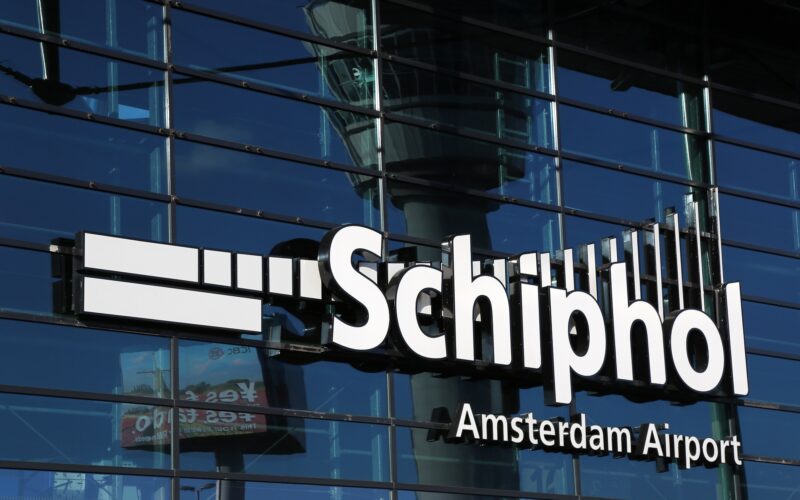The leadership at Amsterdam Airport Schiphol (AMS) has recognized that there will have to be changes on how the airport interacts with its community.
Presenting an eight-point plan in order to become more environmentally and community-friendly. The plan includes banning private jet flights from/to Schiphol as well as prohibiting the operations of the nosiest aircraft at the airport.
Furthermore, Schiphol is also looking to leverage technologies in order to reduce the nuisance airfield operations have on the local communities.
“We need to harness the power of data and technology,” Lennert l’Amie, the chief information officer (CIO) at Schiphol, told AeroTime during an interview at the World Aviation Festival 2023.
L’Amie noted that he has advocated for CIOs and chief technology officers (CTO) to play a major role in helping airports and other stakeholders to become more sustainable.
“I truly believe that if we utilize that [technological] knowledge, we can come up with quite impressive solutions,” he added.
While l’Amie said that the future will bring fundamental changes to the industry, including either electrification or the usage of hydrogen to power aircraft, airports can now optimize operations with sustainability in mind.
“One example is how can you optimize your gate planning and tug operations based on sustainability and emission reduction parameters,” the CIO explained. “I think in every product we build sustainability should become a crucial part of it.”
However, l’Amie argued that it will require a mindset change, namely switching from day-to-day survival to thinking about the long-term future.
“We work with startups, by default, because they think differently than us,” l’Amie noted “But the solution is not always there,” the Dutch executive continued, stating that there is a fundamental need for mature products.
Schiphol has been co-developing products with startups, but in that scenario, “you need to be crisp and clear on what you are trying to achieve” with those products. Furthermore, the CIO warned that there is always a risk of a downfall of a startup.
Stakeholder collaboration
L’Amie noted that building a quieter, cleaner and better airport “is not always easy”.
Looking from a sector perspective, he noted that doing so requires the collaboration of “airlines, air traffic control, authorities, and other stakeholders.”
But Schiphol is feeling the pressure to reduce emissions, which at the same time turns into “intrinsic motivation” to make the airport more environmentally friendly.
“It is something that drives us to make the world at least a bit better,” the Dutch executive said.
Schiphol’ innovations are not limited to sustainability initiatives. Following a difficult summer in 2022, when the airport, like many others in Europe, struggled to deal with the surge in travel demand, the airport had to make changes. Investment in physical infrastructure is costly and lengthy, so this is an area where airports can once again leverage technology.
“Passengers should not experience that,” l’Amie said.
“The best thing we did was optimizing our security capacity,” he added, mentioning that it was done in partnership with Schiphol’ airlines. “It was one of the struggles we had and the firm basis [for fixing it] was sharing data.”
During the summer of 2022, the CIO stressed that it was vital for the airport for its carriers to share their data and knowledge, and Schiphol reciprocated. As such, the company was able to develop a solution for passengers to be able to book time slots at the security gates.
“That is something we developed specifically to optimize security capacity, while also optimizing passengers’ happiness,” the Dutch executive commented.
L’Amie explained that while the front-end development of the solution was easy, the difficult part was the integration of the solution into the airport’s planning and validation processes.
Still, the end result was reducing peak queues by 6%, which, he said, for a “capacity-stretched airport, was really important”.
For l’Amie, one of the more exciting and valuable developments will be the focus on passengers with reduced mobility (PRM) experience.
“We are extending our service platform towards people with reduced mobility, which would help us in optimizing our [travelers’] flow,” he noted. “I am really happy that we are moving from a simple perspective [about PRM] and we are evolving it.”
Schiphol is now set to implement yet further technological developments.
The Dutch executive explained that there is a technology cycle taking place every five to seven years, resulting in a high innovation cycle even for tenured veterans working at Schiphol.
According to l’Amie, using technologies at airports is far different than anywhere else in the industry.
“It is tangible, and you can truly touch your data points, you can see what you are delivering, and you can also see happy passengers the moment you deliver something useful,” the executive concluded.

